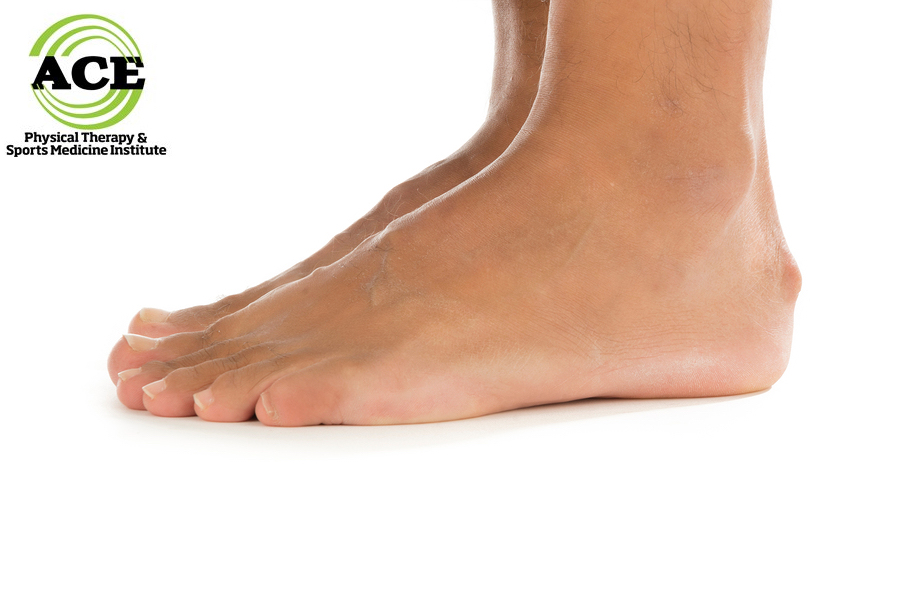HAGLUND’S DEFORMITY

Tid Bits of Info
- Haglund’s deformity is a bone spur on the heel bone near the insertion of the Achilles tendon.
- Haglund’s deformity affects the bone and soft tissues in the insertional area and causes inflammation and pain.
- Wearing open back shoes, heel lifts and custom orthotics will often times limit the severity of the symptoms.
- Stretching and strengthening the calf muscles is necessary to help to reduce the intensity of the symptoms.
- Seek the advice and treatment from a Physical Therapist if you have been diagnosed with Halgun’s deformity
John Wall, the Washington Wizard’s star point guard, recently announced that he will miss the remainder of the season to have surgery performed on his heel. Due to privacy laws, we do not know the exact diagnosis, but many news articles have referenced a “bone spur” poking into his Achilles tendon. The most common type of bone spur in this part of the body is known as a Haglund’s deformity.
A common cause of heel pain, Haglund’s deformity is a bone spur on the heel bone near the insertion of the Achilles tendon. The Achilles tendon is the thick cord-like structure that attaches the calf muscles to the foot and ankle complex. The attachment or insertion is on the calcaneus or heel bone. The tendon is a thick, leather-like cable that transmits forces from the muscles to the bones of the foot/ankle and enables us to move. The insertion point can become irritated in many ways and lead to bursitis and/or tendinitis. In the case of Haglund’s deformity, the soft tissues in this area are irritated by the shoe rubbing against them and pressing them into the bony enlargement or spur.
Haglund’s deformity develops due to the constant “pull” on the bone. Heredity usually is a major contributing factor to the Haglund’s deformity. The anatomy of the foot can lead to the pull on the bone. If someone has high arches (pes cavus), the heel bone is slightly tilted which puts a stretch on the Achilles tendon. The stretched Achilles places tension on the bone and over a long time, it can lead to the development of a bone spur.
People who have very tight calf muscles or walk on the outside (lateral) of their foot are more prone to developing a Haglund’s deformity due to the constant irritation at the site of the Achilles tendon insertion.
The diagnosis of Haglund’s deformity is done via an x-ray. Treatment of the condition begins with a non-surgical approach. The symptoms are addressed initially and then an attempt is made to reduce the stress at the insertion of the Achilles tendon.

Physical Therapy is usually prescribed for someone who is suffering from Haglund’s deformity. The Physical Therapist will evaluate the patient’s foot and develop a treatment protocol that will address the symptoms and attempt to correct the true problems. Inflammation is the primary cause of pain and there are numerous treatment protocols that are used to address this condition. More challenging is the need to develop a plan to address the cause (s) of the condition. In many instances, the patient will begin with an extensive exercise program to develop increased flexibility in their calf musculature. Strengthening these muscles should be a part of their rehabilitation program because any muscle that is too short or too long will be weak. These patients usually have custom orthotics made that help to control the motions of the foot during weight-bearing activity. Patients are encouraged to wear open back shoes to reduce the rubbing on the bone spur. Many will put a small heel lift in their shoe to reduce the stretch on the Achilles tendon and lastly, the doctor usually prescribes an anti-inflammatory medication.
When non-surgical treatment does not resolve the symptoms and the pain limits a person’s function the bone spur has to be removed surgically. The procedure can be extensive and involve the actual tendon which leads to a very lengthy post-operative rehabilitation. In many instances, the patient will not return to high-level activity for nearly 1 year.
Haglund’s deformity is present in many individuals and can be treated successfully in most instances. The non-surgical approach is usually successful at reducing the intensity of the symptoms and restoring the patient’s normal function. In the event that the non-surgical approach does not work, surgery can “fix” the problem but the rehabilitation time is extensive.
























